Category: Uncategorized
Unique Folding Patterns in Autism Brains

Recent studies have shown that the brains of children with Autism Spectrum Disorder (ASD) fold differently than a normal brain—either being unusually smoother or unusually convoluted depending on location and age. Researchers measure the development of neural tissue folds in the cortex as changes in the local gyrification index; a ratio which compares the area of the smooth outer surface with that of the inside the sulci. Using this information, researchers can understand the link between autism and the folds of a brain.
In a study at San Diego State University, it was found that school-age children and adolescents with autism had more intricately folded regions. The left temporal and parietal lobes, which are responsible for processing sound and spatial information, were shown to have these intricate folds in children with autism. Research also found increased gyrification in the right temporal and frontal lobes, which are responsible for decision making and motor skills. In contrast, a second study found that preschoolers with autism do not show this degree of intricate folding unless they had enlarged brains. Preschoolers with autism were also found to have an unusually smooth region in the occipital lobe (specifically in the region dedicated to recognizing faces). These studies, in juxtaposition, demonstrate that brain folding hints at the different developmental path that autism brains follow when compared to normal brains. According to Ruth Carper, a researcher at San Diego State, “many of the brain areas with exaggerated folding are among the earliest to develop folds during gestation.” Thus, the folding will increase in intricacy and convolution over time due to this developmental disruption. In another study at the University of California, Davis, researchers found that children with enlarged brains actually have a specific subtype of autism due to the fact that only children with enlarged brains exhibited this degree of increased and atypical folding. This study adds to the evidence that folding patterns depends on the development of the individual and where that individual lies within the autism spectrum.
It’s clear that ASD is a very complex subset of conditions and traits that are influenced by various genetic and environmental factors. A great deal of research is focused on identifying physical differences, such as brain folding patterns, which are present in the autistic brain. In doing so, resources may be found to aid and benefit a developing brain with ASD. Lastly, such research will only further our understanding of how all of our brains grow and evolve over time.
Writer: Ava Genovese
Editor: Farwa Faheem
Sources:
Don’t Reject Rejection
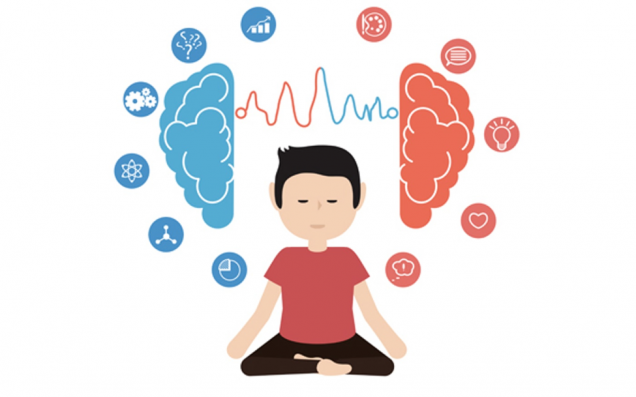
Everyday a person may be ignored by someone, not get a job or internship they wanted, not get invited somewhere, or not have their opinion factored into an important decision. The result of this is the person feeling unwanted or not valued. Multiple fMRI scans have shown that the brain processes rejection in similar parts of the brain that process physical pain. This feeling can escalate to depression, violence, suicide, or be covered up by the usage of drugs. So what’s the trick to overcome this feeling? Mindfulness.
Mindfulness is “maintaining a moment-by-moment awareness of our thoughts, feelings, bodily sensations, and surrounding environment, through a gentle, nurturing lens” (Kabat-Zinn). It is crucial to live in the present moment verses lingering on what could or could not have happened in the past or fearing what could happen in the future.
Dr. Chester and doctoral candidate Alexandra Martelli conducted a study looking at how specific brain circuits are able to help more mindful people cope with rejection, focusing on the connections between the ventrolateral prefrontal cortex (VLPFC), which inhibits negative emotions, with the amygdala and dorsal anterior cingulate cortex (DACC), which generates emotions, with the amygdala and dorsal anterior cingulate cortex (DACC), which generates questionnaire for the scientists to see how mindful they are. The participants returned two weeks later to play a ball-tossing game on a computer that was pre-programmed, but the participants were told that it was other students playing the game. The game started with an equal number of passes and ended by excluding the participant. During this, the participants were in an fMRI scanner, and after the game they were removed from the fMRI scanner and reflected on the experience with another questionnaire of agree and disagree statements.
The outcome of the study was that the people who were proven to be more mindful in the previous questionnaire showed less distress from being excluded during and after the game. The fMRI results showed that the more mindful people had less connections between the VLPFC with the amygdala and the DACC, and overall less activity in the VLPFC. This is due to their accepting the experience of rejection instead of suppressing it. When people overwork their VLPFC by trying to control their emotions or trying to change the way they think about the situations, distress and anger are able to build up, eventually being expressed in a negative way.
Researcher Gaelle Desbordes is currently taking fMRI scans of clinically depressed patients before and after an eight-week course in mindfulness-based cognitive therapy (MBCT) developed by Kabat-Zinn. This included focusing on their heart beats and then reflecting on their negative thoughts, while the control group completed muscle relaxation. Her goal is to better understand mindful meditation and what types of people it can benefit the most in order to provide an alternative way other than medication to treat depression and stress-related disorders. Since mindfulness is commonly associated with the ancient traditions of meditation, Desbordes hope to find out what types of meditation help and the mechanisms behind it.
Mindfulness has shown a lot of other benefits to the body, though it is unknown the exact reasoning on how it works and is challenging to design and execute a well-run study on. Seminal studies have shown that after eight weeks of MBCT, the immune system, blood pressure, sleep, memory, attention, and decision-making are improved. Studies have also shown it helps veterans with PTSD. Ways to incorporate mindfulness into your day are paying attention to your breathing and all the senses that surround you, especially the body’s physical sensations. This can include driving, eating, listening to music, and walking. Focus on your current thoughts and emotions, with the realization that any negative thought or feelings are not permanent. Focus on the moments of the day that provided a positive mindset and provided you a sense of purpose. Write down and observe your thoughts to clear your head if it is hard to understand and focus on the stream of thoughts. Most importantly remember not to reject the next time you get rejected.
Writer: Lauren Renehan
Editor: Samantha Stoker
Sources:
https://greatergood.berkeley.edu/topic/mindfulness/definition#what-is
https://greatergood.berkeley.edu/article/item/can_mindfulness_help_your_brain_cope_with_rejection
https://www.psychologytoday.com/us/blog/the-harm-done/201810/how-the-mindful-brain-copes-rejection
Our Brain on Exercise
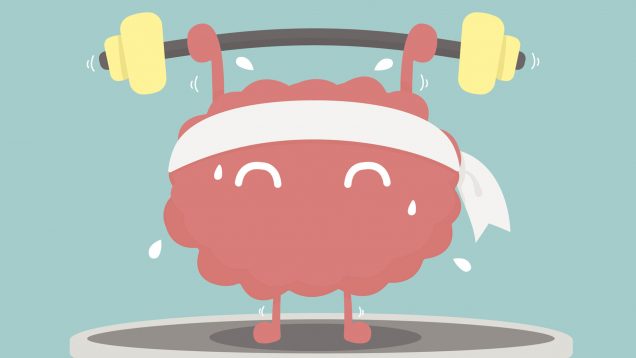
A large amount of research has demonstrated the power of exercise to support cognitive function, the effects of which can last for considerable time. An emerging line of scientific evidence indicates that the effects of exercise are longer lasting than previously thought - to the extent in which future generations can inherit these effects. The action of exercise on epigenetic regulation of gene expression appears central to building an “epigenetic memory” to influence long-term brain function and behavior. There have been new developments in the epigenetic field connecting exercise with changes in cognitive function, including DNA methylation, histone modifications, and microRNAs (miRNAs). The understanding of how exercise promotes positive long-term cognitive effects is crucial for directing the power of exercise to combat the issue of neurological and psychiatric disorders.
The positive effect of exercise on learning and memory in humans and animals has received abundant support. In older adults, exercise has been shown to improve cognitive performance and counteract the mental decline associated with aging, and these effects have been associated with modifications in hippocampal size. In one study, 21 women between the ages of 67 and 81 participated in exercise for 80 minutes per day. After 24 weeks, their hippocampal volume increased. In children, exercise has been found to be associated with cognitive performance: children who engaged in greater amounts of aerobic exercise generally performed better on verbal, perceptual, and mathematical tests. Recently, a meta-analysis study reported that a single bout of moderate aerobic exercise improves inhibitory control, cognitive flexibility, and working memory in preadolescent children and in older adults, indicating that beyond the well-known effects of long-term exercise on the brain, acute exercise also can be used as a tool for situations demanding high executive control. Interestingly, a single session of both aerobic and resistance exercise has been found to enhance memory consolidation in rats.
Epigenetic research has been centered on the analysis of changes on top of the genome that do not involve alterations in the nucleotide sequence. The two most studied epigenetic mechanisms are covalent modifications of DNA (methylation) or of histone proteins (i.e. acetylation and methylation), and their resulting effects on altering gene expression. The phosphorylation and methylation of histones are also tightly associated with regulation of learning and memory.
In agreement with its role in cognition, physical exercise can coordinate the action of genes involved in synaptic plasticity with resulting effects on memory preservation. For example, while exercise enhances the expression of genes (i.e. Bdnf, igf-1 and creb) that positively regulate memory consolidation, it downregulates genes (i.e. PP1and calcineurin) with a repressive role in these events. Evidence shows that DNA methylation is an important mechanism by which exercise affects gene expression. It is known that exercise differentially modulates the methylation pattern of specific CpG islands located at Bdnf gene, decreases hippocampal expression of DNMTs, attenuates the global methylation changes induced by stress, and increases Bdnf transcription through demethylation of its promoter IV.
It has been shown that the acetylation of histone proteins is a requisite for long term memory . For example, intrahippocampal injection of global HDAC inhibitors enhances long term potentiation. The pro-cognitive function of HDAC is partially attributed to their ability to increase histone acetylation. Interestingly, a previous study has shown that, like HDAC, physical exercise has the ability to transform a learning event that does not normally lead to a stable memory trace into a long-lasting form of memory (Intlekofer et al, 2013). Additionally, it was found that physical exercise increases histone acetylation and reduces HDAC expression and neural activity in the hippocampus.
In a recent study, Zhong et al. (2016) observed that exercise-induced memory improvements were associated with enhanced expression of cAMP response element-binding protein (CREB)-binding protein (CBP) in the hippocampus. Mechanistically, the recruitment of CBP triggers histone acetylation and the formation of a transcriptional complex at the promoters of many CREB-target genes to activate transcription. CBP mutant mice exhibit profound deficits in synaptic plasticity and LTM. Altogether, the aforementioned findings raise the idea that physical exercise promotes synaptic plasticity and memory improvements by altering the balance of HDAC enzymatic activity to favor a permissive state of chromatin, leading to the transcriptional activation of a myriad of genes with preponderant roles in cognition.
College students are known for being arguably the unhealthiest kind of humans. Between studying and managing social lives, exercise and self-care can be neglected despite their obvious importance. Sadly, this neglect might be prohibiting us from performing at our best as students. So, let me ask you this: how are you going to exercise today?
Writer: Kawtar Bennani
Editor: Nathaniel Meshberg
Sources:
https://www.nature.com/articles/npp2013104
https://www.sciencedirect.com/science/article/abs/pii/S0306452215011422
Vitamin B6 May Improve Dream Recall
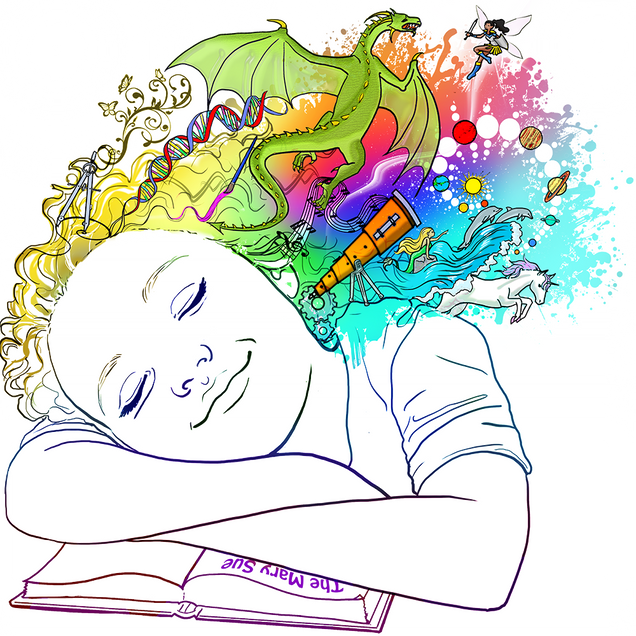
Vitamin B6 is a water-soluble molecule that is involved in many vital body functions such as metabolism of glucose, synthesis of neurotransmitters, immune function, and hemoglobin formation. Adults usually only need around 1.3 mg of vitamin B6 per day, but one study led by Pfeiffer found that taking 240 mg of vitamin B6 before sleep can improve dream recall. The study also concluded that inability to recall dreams can be due to a lack of vitamin B6 in the diet. Ebben et al. (2002) also found that ingesting high doses of vitamin B6 can intensify emotions, color, vividness, and bizarreness of dreams. In this study, 12 participants were asked to take placebo, 100 mg of vitamin B6, and 200 mg of vitamin B6 for five days each with two days washout period between each condition. They found that when people took 100 mg of vitamin B6, their dream salience score was 30% higher than the placebo, and when 200 mg of vitamin B6 was taken, dream salience score was 50% higher. Thus, there seems to be a dose-dependent relationship between vitamin B6 and dream salience. But why does vitamin B6 have this effect? Ebben theorized that vitamin B6 helps synthesize serotonin, which represses REM sleep in the first few hours of sleep, and REM sleep is responsible for dreams that people can remember. As a result, in the last few hours of sleep, there is a REM sleep rebound in which there is a more significant amount of REM sleep with intensified dreaming, leading to higher dream salience. Another theory proposed by Goodenough (1991) was that vitamin B6 also causes a lot of sleep disturbance, leading to frequent wake-ups during sleep. This gives the brain a chance to convert the short-term memory of the dream into long-term memory.
However, one study by Aspy et al. (2018) suggested that vitamin B6 does not increase dream saliency, but only increases the amount of dream content that is recalled. This study used a larger sample size of 100 participants with around 30 people in each group: placebo, vitamin B6, and B complex. Dream recall frequency and dream count were not statistically significant between placebo and vitamin B6 groups; dream recall frequency examines how many people in the sample recall any dreams and dream count tests how many dreams people remember. However, when using the Dream Quantity measure to test significant differences, the vitamin B6 group demonstrated a more significant dream content of 64.1% compared to the placebo group. They also found that vitamin B6 did not have any significant effects on sleep disturbance, sleep quality, or tiredness after waking, discounting Goodenough’s theory. On the other hand, the B complex group did show a significant decrease in sleep quality and increase in tiredness after waking, despite ingesting the same amount of vitamin B6. This indicates that one of the vitamin B counters the effects of vitamin B6; Aspy suggests that it is vitamin B1. This study seems to undermine the effects of vitamin B6 in dream salience and recall; however, there is a limitation to these findings due to the way the study was conducted. Aspy et al. (2018) used different participants in each conditional group, while Ebben et al. (2002) used the same participants in each conditional group. As a result, Ebben’s study can account for the subjective individual differences, and measure the differences more objectively. Nevertheless, Aspy did use a bigger sample size, which may make his data more reliable.
Although more future studies should be conducted to test the effects of vitamin B6 on sleep and dream saliency, there seems to be one strong indication from all these studies: vitamin B6 increases your ability to recall more dream content. The research also suggests that vitamin B6 aids in lucid dreaming, but again, further studies need to be conducted. If you cannot seem to remember any of your dreams after waking up, try increasing the intake of vitamin B6 in your diet with caution, and perhaps you will be able to recall more dreams.
Writer: Audrey Kim
Editor: Sophia Hon
Sources:
Ebben, M., Lequerica, A., & Spielman, A. (2002). Effects of pyridoxine on dreaming: A preliminary study. Perceptual and Motor Skills, 94, 135–140.
Pfeiffer, C. (1975). The sleep vitamins: Vitamin C, inositol, and Vitamin B-6. In C. Pfeiffer (Ed.), Mental and elemental nutrients. New Canaan, CT: Keats.
Goodenough, D. R. (1991). Dream recall: History and current status in the field. In S. J. Ellman & J. S. Antrobus (Eds), The mind in sleep: Psychology and psychophysiology (2nd ed.). Oxford, England: John Wiley.
Aspy, D. J. (2018). Effects of Vitamin B6 (Pyridoxine) and a B complex preparation on Dreaming and Sleep. Perceptual and Motor Skills. 0(0), p 1-12
https://ods.od.nih.gov/factsheets/VitaminB6-HealthProfessional/
Sitting for too long may be bad for your brain

Do you consider yourself a couch potato? According to a new study done at UCLA, sitting for prolonged periods of time may be harmful for your brain. Thirty five participants from ages 45 to 75 were recruited and asked about their physical activity patterns such as how many hours they spent sitting down during the previous week. The participants reported average sitting times of three to fifteen hours per day. Researchers then scanned their brains in an MRI and compared the sizes of their medial temporal lobe (MTL), a brain region important for learning and forming episodic memory.
They found that participants who spent more time sitting per day had thinner MTL structures and that sedentary behavior is a significant predictor of MTL thinning. They also found that every additional hour of sitting was associated with a 2% decrease in MTL thickness after adjusting for the subjects' ages. However, the researchers did not find any correlation between physical activity levels patterns and thickness of the structures, thus showing that physical activity is insufficient to offset the negative effects of sitting for extended periods. The finding that sedentary behavior is associated with reduced MTL thickness is consistent with studies showing extended sitting times increase the risk of heart disease, diabetes, and premature death. While the researchers focused on the hours spent sitting, they did not ask if the participants took any breaks during this period. They also could not say why sitting for extended periods is associated with MTL thinning. One theory is that if sitting for too long compromises the supplies of oxygen and nutrients the brain needs to stay healthy, then it would be reasonable to expect the brain to be unable to maintain its proper volume and start thinning.
For future studies, the researchers plan to follow a group of people for a longer amount of time in order to determine whether sitting causes the MTL thinning or other factors such as race, gender, and weight also play a role in brain health. MTL thinning is considered a precursor to dementia in middle-aged and older adults. The researchers believe that reducing sedentary behavior may prove fruitful in improving brain health in people at risk of Alzheimer's disease, a condition which reduces the volume of memory-making structures in the MTL including the hippocampus and the entorhinal cortex.
Writer: Nathaniel Meshberg
Editor: Audrey Kim
Sources:
http://www.latimes.com/science/sciencenow/la-sci-sn-sitting-brain-memory-20180413-story.html
https://www.sciencedaily.com/releases/2018/04/180412141014.htm
Overactivity in Autism
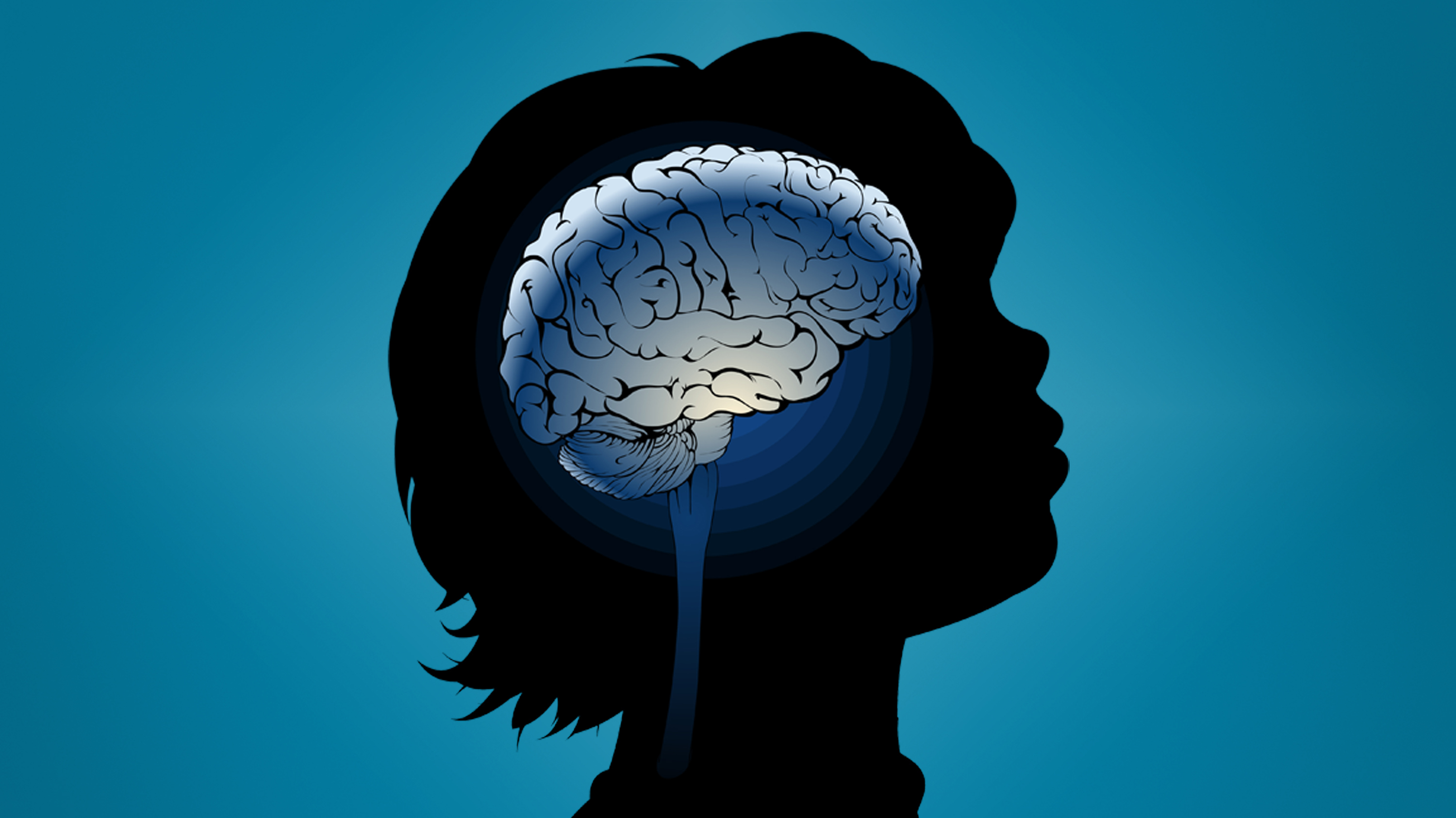
Autism is a developmental disorder that often subjugates an individual to social difficulties. Symptoms of autism include impaired social, communication, and behavioral skills. When an individual has these traits, it can be difficult for the person and the people around them to engage in social interactions. Individuals diagnosed with autism may lack the assistance that they need, due in part to the stigma that surrounds the disorder. Though the causes for the disorder are unknown, evidence suggests that certain genetic factors may play an important role. Autism has been linked to brain regions such as the cerebellum, cerebral cortex, limbic system, corpus callosum, basal ganglia, and brainstem. With this, it seems like we may know the location and symptoms of autism, but do not exactly understand the causes that may lead to its development.
Recently, a Northwestern Medicine lab has begun research on the genetic factors linking autism to epilepsy. They have found that a mutation in a certain major gene, catnap2, which is typically linked to autism, causes seizures. With this mutation, the inhibitory neurons shrink and become unable to deliver messages effectively. In association with another mutation, CASK, individuals experience a mental impairment as well. With this discovery, many new therapies can be focused on these mutations. New studies can also be conducted to explore whether preventing this mutation may also prevent epilepsy. Currently the lab is screening molecules to identify effective drugs that might prevent these genetic abnormalities. Hopefully with these new discoveries, the mysteries of autism can be uncovered and the stigma can be removed from the disorder as a whole.
Writer: Albert Wang
Editor: James Kunstle
Sources:
https://www.nature.com/articles/s41380-018-0027-3
https://www.psychologytoday.com/us/conditions/autism-spectrum-disorder
https://www.ncbi.nlm.nih.gov/pmc/articles/PMC1350917/
https://iancommunity.org/ssc/autism-stigma
Does language influence the way we think about time?
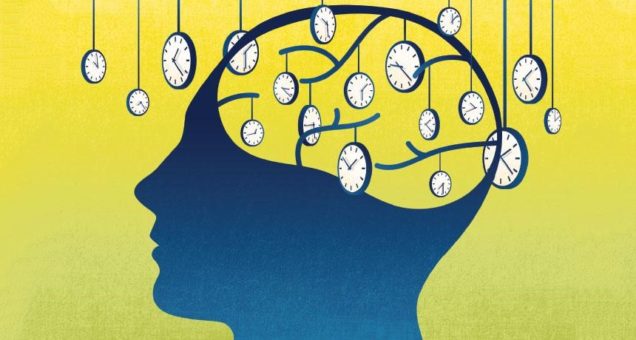
Time, as abstract as it is, is a crucial part of everyday life. Like other fundamental domains of experience, the idea of time is strongly associated with our brains. We use language all the time to express ourselves, but does language also shape how we see the world by influencing our concept of time?
According to studies conducted by Lera Boroditsky, a cognitive science professor at the University of California, San Diego, the concept of time does differ dramatically across languages. She found that people all over the world share a common trait despite speaking very differently: relying on space to organize time. For example, time naturally flows from left to right for English speakers, who read from left to right. However, Arabic speakers, who write from right to left, tend to organize stories from right to left. In Pormpuraaw, a remote Australian Aboriginal community, people don’t use the words “left” or “right” at all. Instead, they use “north,” “south,” “east,” and “west.” Consequently, Pormpuraawans represent time from east to west and think about time in unique ways: they would lay out a story from left to right when they are facing south, from right to left when facing north, toward the body when facing east, and away from the body when facing west.
A 2001 paper by Boroditsky shows that Mandarin speakers arrange time both horizontally, like English speakers, and vertically. In Mandarin, the words “up” and “down” are often used to describe earlier and later events, respectively. As a result, Mandarin speakers in the experiment were faster to verify that “March comes earlier than April” when given vertical primes than they were when given horizontal primes.
What if you are bilingual? According to Boroditsky, one possibility is that you have a different mind for each language and switch from one to the other. On the other hand, you could argue that your mind is fully integrated. The answer, in fact, lies somewhere in between. Bilinguals never “turn off’ a language; the language they are speaking in just becomes more active.
Writer: Zijing Sang
Editor: Sophia Hon
Sources:
http://journals.sagepub.com/doi/pdf/10.1177/0956797610386621
Brain Food

Today’s food industry offers people diets of concentrated sugar and carbs, and does so at low prices. Visiting a fast food restaurant, one finds that healthy options are often far more expensive than calorie-loaded favorites. This is evident at McDonalds, where a salad costs more than a Big Mac. This trend in pricing is not exclusive to fast food chains. Prices for carbonated drinks and butter have decreased over time while vegetables and fruits have become more expensive. Consumption of cheap, unhealthy foods can be bad for our brains as well as our bodies. With greater access to foods with more sugar, carbohydrates, and fat, people today are at higher risk of developing Alzheimer’s disease than ever before.
A group of researchers studied the effects of nutrients on brain composition. They found that eating unhealthy foods increased amyloid-beta protein production, decreased gray matter volume, and decreased glucose metabolism. Aggregation of amyloid-beta protein is one of the key markers for Alzheimer’s disease, while a decrease in gray matter volume identifies brain atrophy, a common cause of dementia. The brain runs on glucose, so measuring the rate at which glucose is metabolized can be a good measure of decreases in cognition. The researchers found that vitamin B12, vitamin D, and zinc, compounds found in healthy foods such as cooked beef, oysters, sardines, cheese, spinach, and kale, lowered amyloid-beta protein levels, increased gray matter volume, and increased glucose metabolism. Vitamins E, A, and C, monounsaturated fats, polyunsaturated fats, and carotenoids, all found in citrus fruits and orange hued vegetables such as carrots and tomatoes, were also strongly associated with increased glucose metabolism. On the other hand, trans-saturated fats, saturated fats, cholesterol, and sodium, typically in high concentration in cheap, unhealthy foods, lowered glucose metabolism, gray matter volume, brain activity levels, and induced brain atrophy.
Though the general trend among food items appears to be that cheapness excludes healthfulness, one glaring counter-example is America’s favorite drink: coffee. Drinking the caffeine found in coffee can yield short-term increases in alertness and cognitive function and seems to decrease risks of cognitive decline in the long-term. A study found that coffee and tea consumption resulted in higher scores in cognitive tests and lowered risks to Alzheimer’s disease, dementia, and mild cognitive degeneration. In combination with a better diet and consumption of coffee or tea, one can make their brain healthier and lower their risk of developing Alzheimer's.
Writer: Audrey Kim
Editor: James Kunstle
Sources:
Panza, Francesco, et al. “Coffee, Tea, and Caffeine Consumption and Prevention of Late-Life Cognitive Decline and Dementia: A Systematic Review.” The Journal of Nutrition, Health, and Aging, vol. 19, no. 3, pp. 313–328. Web of Science.
Berti, V, et al. “Nutrient Patterns and Brain Biomarkers of Alzheimer's Disease in Cognitively Normal Individuals.” JOURNAL OF NUTRITION HEALTH & AGING, vol. 19, no. 4, Apr. 2015, pp. 413–423. Web of Science.
https://www.dietitians.ca/
https://economix.blogs.
https://ods.od.nih.gov/
What is PANDAS?

PANDAS, a fairly new disorder, has been gaining media attention because of the lack of research surrounding the factors and the unknown prevalence of the disorder itself. PANDAS, commonly known as Pediatric Autoimmune Neuropsychiatric Disorders Associated with Streptococcal Infections, is a disorder that stems from untreated strep and results in the debilitating onset of obsessive compulsive disorder like symptoms, tics, anxiety, and changes in motors skills (changes in handwriting, speech, balance); these symptoms can happen overnight and have alarmed doctors and loved ones alike. Interestingly, PANDAS is often associated with the DSM-IV category, “Obsessive-Compulsive and Related Disorders” because of its OCD symptoms. Now, how does an untreated strep infection lead to these life-changing effects?
When strep goes untreated, it may trigger an immune response that results in inflammation on the brain—this inflammation is the direct cause of the onset symptoms. The symptoms will usually occur 4-6 months after the initial strep reaction. Streptococcal infections are often treated with antibiotics; however, the antibiotics may fail to eradicate the bacteria and build up will start to occur. The strep bacteria will partake in a process called molecular mimicry, in which the bacteria will place molecules familiar to the body (molecules found in tissue, on the heart, etc.) on its cell wall in order to remain undetected by the immune system. Once the immune system detects this foreign creation, antibodies will attack the mimicked molecules and the actual bacteria; this may be a cataract for the creation of antibodies that will start to target the brain, leading to the neuropsychiatric symptoms discussed above.
Other onset symptoms of PANDAS may include trouble sleeping, hyperactivity, inattention, separation anxiety (difficulty separating from parents), and mood changes. Children with PANDAS often experience the symptoms in episodes; there may be full remission of the OCD like symptoms during therapy and children often recall having good and bad days in regards to the symptoms. Treatment for this disorder typically involves antibiotics, as fighting the bacteria will alleviate the symptoms in due time. Immunoglobulin therapy has also been considered as a remedy for severely ill patients, as this plasma exchange is often used for immune disorders and may have side effects such as risk of infections, headaches, vomiting, and dizziness.
As more research is conducted on the subject, we can only hope that the prevalence will soon be known in order to familiarize the public and doctors with this ambitious disorder.
Writer: Gabriella Ademi
Editor: Audrey Kim
Sources:
https://www.nimh.nih.gov/health/publications/pandas/index.shtml
http://www.pandasnetwork.org/understanding-pandaspans/what-is-pandas/
Birth Order and How It Shapes Our Lives

We’ve all heard these stereotypes: firstborns are usually more conscientious, disciplined, and ambitious since their parents are stricter with them; middle children tend to be peacemakers, competitive but understanding; youngest children are generally more outgoing and free-spirited.
Although whether birth order significantly affects personality traits is not conclusive, research has shown that birth order plays a powerful role in job success. A number of studies have found that firstborns and only children are more likely to be in high-achieving professions such as law and medicine as well as leadership positions such as CEOs and U.S. presidents. Examples include Winston Churchill, Oprah Winfrey, and Bill Clinton. On the other hand, laterborns are overrepresented among successful athletes in general. While their older siblings tend to do better academically, laterborns often choose to strive for difference and create their own niche.
Joseph Doyle, an MIT economist, studied how birth order impacts delinquency. The research focuses on boys because they have a much higher chance of getting in serious trouble as teenagers than girls do. The results indicate that the second-born children, compared to their older siblings, are 25 to 40 percent more likely to go to prison, get suspended in school, and enter the criminal justice system. So what sets second-born boys apart from their older brothers? Doyle suggests that parenting is an important factor. Parents tend to give more attention to their firstborns and divide their time and resources as more children come along. Another possible explanation is that firstborns and laterborns, despite sharing the same family and environment, have different role models early in life. Firstborns look up to adults, whereas laterborns look up to their older siblings, who are often two- or three-year-olds.
Birth order certainly shapes our lives in many ways and reveals unseen and interesting patterns. However, it is worth noting that birth order is not absolutely deterministic of who we are. For instance, many firstborns are good at sports, and many world political leaders are younger siblings.
Writer: Zijing Sang
Editor: Sophia Hon
Sources:
https://www.npr.org/2017/07/04/535470953/research-shows-birth-order-really-does-matter
https://www.npr.org/2010/11/18/131424878/how-much-does-birth-order-shape-our-lives
http://edition.cnn.com/2008/LIVING/worklife/10/22/cb.birth.order.career/index.html
http://www.mit.edu/~jjdoyle/BDFK_Delinquency.pdf
https://www.parents.com/baby/development/social/birth-order-and-personality/